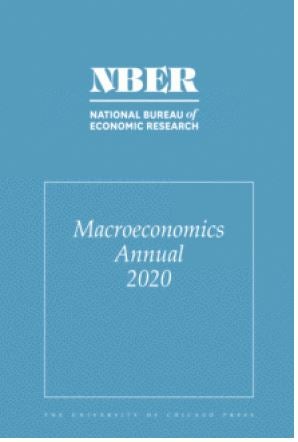NBER Macroeconomics Annual 2020, volume 35
 Martin Eichenbaum and Erik Hurst, editors
Martin Eichenbaum and Erik Hurst, editors
https://www.journals.uchicago.edu/toc/ma/2021/35
The NBER Macroeconomics Annual 2020 presents research by leading scholars on central issues in contemporary macroeconomics. George-Marios Angeletos, Zhen Huo, and Karthik Sastry analyze expectation formation and find that, in response to business cycle shocks, expectations underreact initially but eventually overshoot. This pattern supports models with dispersed, noisy information and overextrapolation of expectations.
Esteban Rossi-Hansberg, Pierre-Daniel Sarte, and Nicholas Trachter contrast the patterns of rising aggregate firm market concentration with falling market concentration over time at the local level. Some associate rising concentration with less competition and more market power, but since most product markets are local, studying changes in local competition, as opposed to trends in aggregate competition, provides important insights.
Adam Guren, Alisdair McKay, Emi Nakamura, and Jón Steinsson develop a novel econometric procedure to recover structural parameters using cross-region variation. They apply this procedure to estimate the effect of housing wealth changes on household consumption.
Peter Klenow and Huiyu Li quantify the contribution of innovation to economic growth. They find that young firms generate roughly half of all productivity growth, that most of the changes in productivity during the mid-1990s were accounted for by developments at older firms, and that most growth results from quality improvements on existing products, rather than the introduction of new products.
Fatih Guvenen, Greg Kaplan, and Jae Song use panel data from the Social Security Administration to assess changes over time in the share of women in the top 1 percent and top 0.1 percent of the earnings distribution.
Joachim Hubmer, Per Krusell, and Anthony Smith Jr. explore the sources of growing wealth inequality. They argue that the significant drop in tax progressivity in the United States starting in the late 1970s was the most important contributor to increasing wealth inequality. Neither the increase in earnings inequality nor the falling labor share can account for a large share of the increase.


